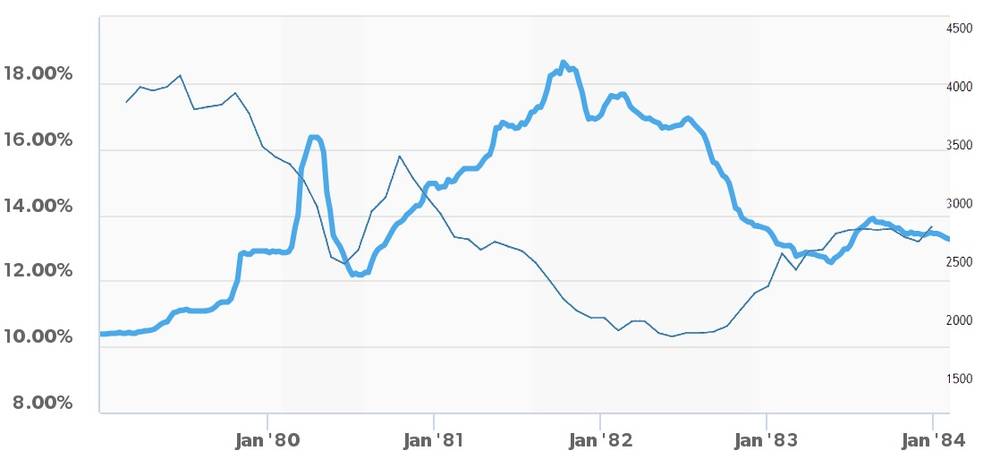Most homeowners bought their homes at mortgage rates that were lower than today’s, and that’s caused what’s known as the “lock-in effect.” Homeowners are hesitant to give up their cheap mortgages, which is suppressing available inventory. Low inventory has kept home prices from falling significantly, even as homebuyer demand fell due to rate hikes.
With mortgage rates down more than one percentage point since their peak in October, the housing market is starting to show signs of rebounding demand. But at what point will the lock-in effect break? And what will happen to housing prices if it does?
The Breaking Point
Since mortgage rates only began declining at the beginning of November, the full effect has yet to be realized. The year-over-year decrease in pending home sales is getting smaller, but that may be due to more sellers dropping their prices. Available inventory has been ticking up since April due to the pressure of mortgage rates on demand, along with new construction completions.
Whether the lock-in effect breaks in 2024 may depend on the extent to which mortgage rates decline, but there are some beginning signs of sellers returning to the market. Altos Research reports an 11% year-over-year increase in new sellers the week of Dec. 19, a turnaround from declines in new sellers all year. New contracts are growing as well.
Some experts expect demand from both movers and new homeowners to skyrocket as mortgage rates fall, which could cause a significant rise in prices. But many economists expect rates to stay elevated above 6% through 2024, which could mean that sellers will stay put.
Zillow research shows that 41% of homeowners with current mortgage rates between 5% and 6% intend to sell their homes, while only 26% of homeowners with mortgage rates between 4% and 5% plan to move. This suggests that a 5% mortgage rate may be the breaking point.
That said, only 10% of homeowners have mortgages with rates above 6%, so even if a decrease in rates motivated them to sell, it would have a relatively minimal impact. And research from John Burns Research and Consulting shows that most homebuyers won’t act until rates fall below 5.5%. That could mean prices will remain stable through 2024.
But history seems to suggest that mortgage rates only need to stabilize to fuel increased home sales. In other words, a return to pandemic-era low mortgage rates may not be necessary to impact sales activity. Once consumers settle into a new normal, we could see transaction volume increase.
What History Shows Us About the Lock-In Effect
In many ways, today’s housing market mirrors conditions in the early 1980s. It started in the late ’70s, when baby boomers aged into their homebuying years, much like millennials led the homebuying boom during the pandemic.
The surge in home prices in the late ’70s was not nearly as rapid as the more recent increase. But as mortgage rates increased when the Fed attempted to control inflation, existing-home sales activity declined almost 50% between 1978 and 1982, and price growth flattened, similar to how things have played out in recent years.
Average mortgage rates for 30-year fixed mortgages peaked at 18.63% in late 1981 after rising nearly five percentage points over the course of a year, which created a lock-in effect among existing homeowners.

This graph of mortgage rates (thick line) is overlaid on the graph of existing-home sales (thin line) for the period between January 1979 and January 1984. Given that existing-home sales lag behind a month or two due to the closing timeline, the impact of falling interest rates in the second half of 1982 was relatively quick.
Mortgage rates only came down about two percentage points before existing-home sales picked up again, even though they had been about eight percentage points lower four years earlier. However, there’s a key difference in today’s housing market: high home prices.
Each dollar spent on real estate stretched about twice as far in the 1980s when compared to today. Furthermore, assumable mortgages may have given sales activity a boost in the 1980s.
Freddie Mac estimates that the average homeowner would need to gain $55,000 from a move, either through a higher-paying job or lower cost of living, in order for selling to make sense financially. That’s based on the average mortgage rate in July, which is similar to the current rate. For homeowners who purchased in 2021, an $85,000 net gain would be necessary to benefit from a move. Therefore, the lock-in effect in the 1980s was not nearly as significant.
Other Factors Impacting Home Sales
To make things more complicated, the lock-in effect isn’t the only factor affecting available housing inventory. In fact, a recent Fannie Mae survey shows that the impact of high mortgage rates on home sellers’ decisions may be overstated. Of the 29% of mortgage borrowers who intended to stay put, only 21% reported that the primary reason was their current low mortgage rate.
That represents just 6% of mortgage borrowers who were holding off on selling, primarily due to feeling locked in. Nearly as many were avoiding selling because they like their home or location. High home prices were another deterrent, and some people wanted to remain in their homes due to proximity to a job or family.
Other studies show different results, however. For example, a Realtor.com survey showed most homeowners felt locked in, and the effect was especially strong for younger buyers.
No matter the reasoning for homeowners to keep their homes off the market, supply lags behind demand for housing. That’s one reason why homebuilder sentiment is improving and new construction starts are growing.
A 4% increase in single-family builds is expected for 2024, but that’s only a fraction of what’s needed to satisfy demand. NAR chief economist Lawrence Yun notes in the press release that the housing market could easily absorb another 30% increase in new starts.
The Bottom Line
If history is an indication of the behavior of sellers today, we may start to see existing-home sales increase gradually alongside falling mortgage rates. But too many factors are at play to determine with accuracy whether sellers will return to the market in 2024.
If mortgage rates fall enough early in the year, demand could rebound quickly, pushing prices even higher. But there’s still the possibility that a deep recession and rise in unemployment could lead to an influx of new supply from distressed sellers and more price reductions. Many experts expect conditions to hold steady in 2024 until mortgage rates fall sufficiently in 2025.
Join the community
Ready to succeed in real estate investing? Create a free BiggerPockets account to learn about investment strategies; ask questions and get answers from our community of +2 million members; connect with investor-friendly agents; and so much more.
Note By BiggerPockets: These are opinions written by the author and do not necessarily represent the opinions of BiggerPockets.

